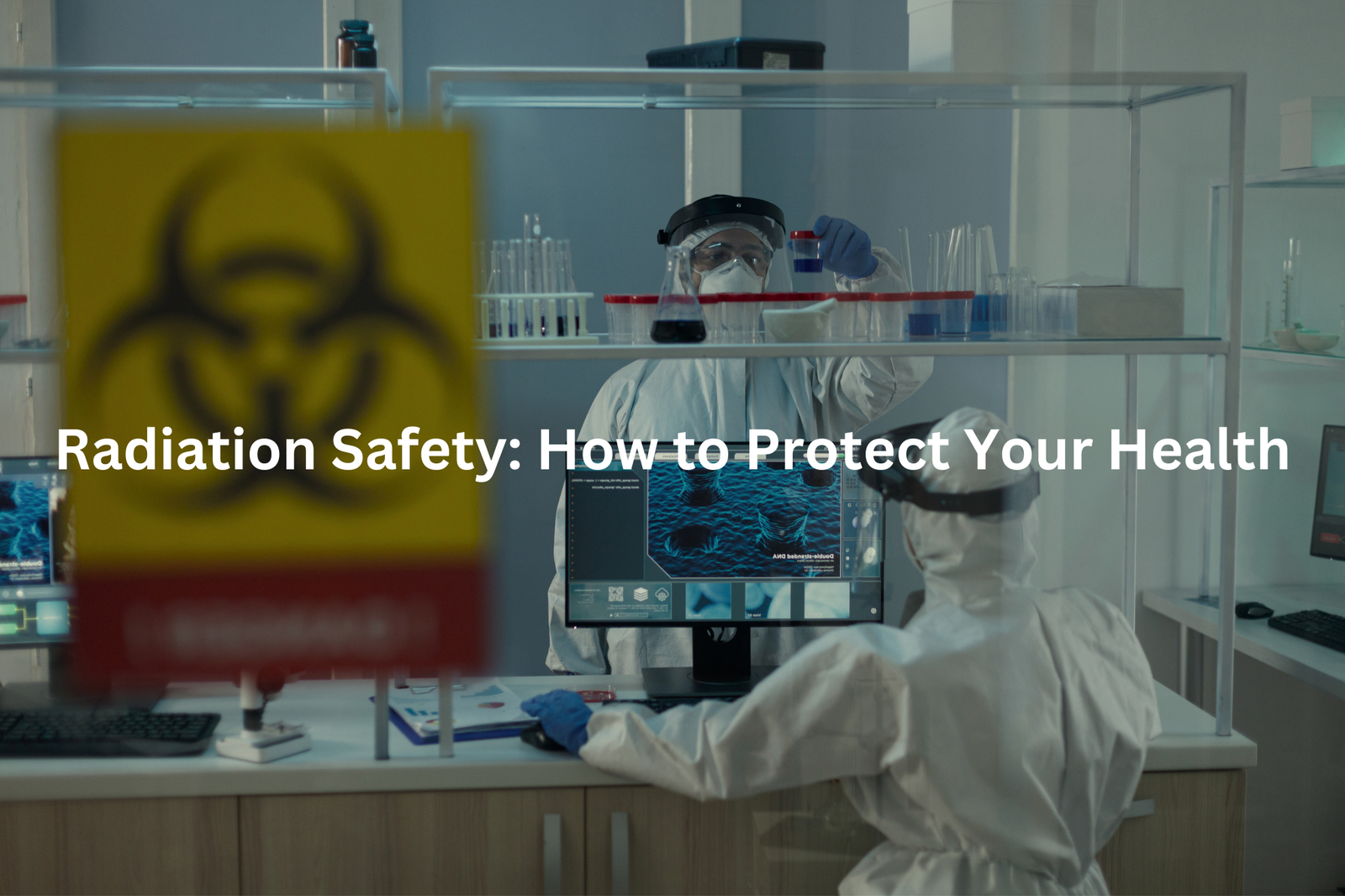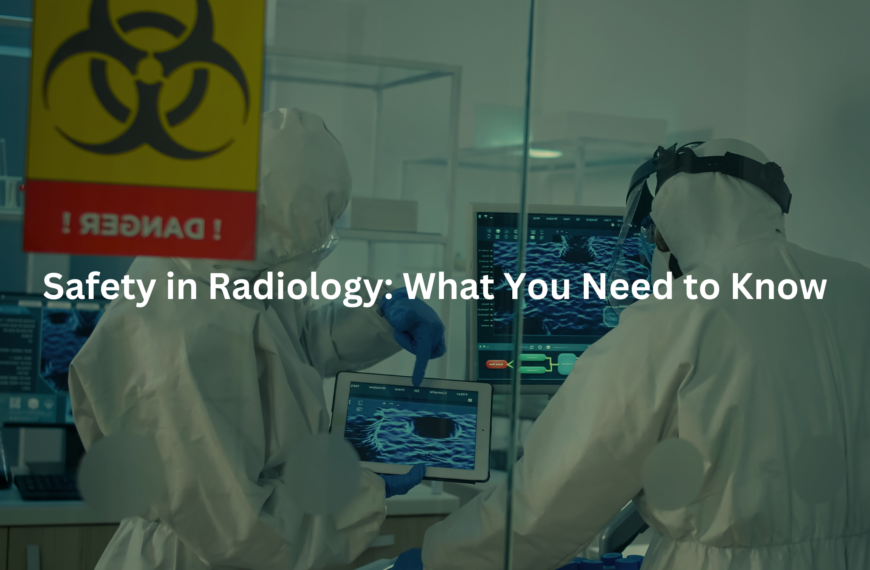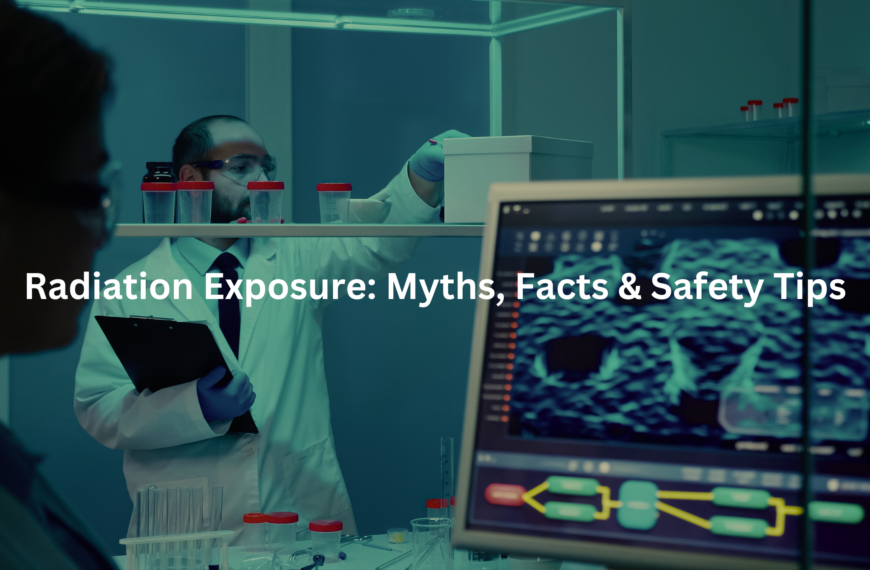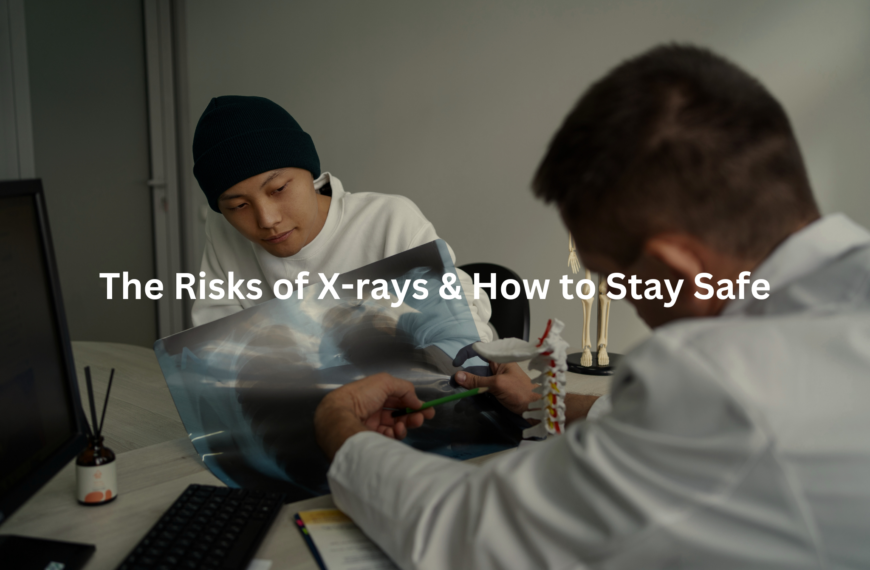Radiation safety matters—learn how to protect yourself from X-rays, mobile phones, and more. Stay informed, stay safe!
Radiation exists all around us (both natural and human-made sources). Some types can help people, like X-rays for medical scans, while others need careful handling. The human body gets small amounts of radiation daily from the sun, soil, and even some foods. Medical radiation requires strict safety rules. Doctors use lead shields and limit exposure time during X-rays.
For mobile phones, keeping them away from the body reduces radiation contact. Simple steps make a difference – staying behind protective barriers during X-rays and following phone manufacturer guidelines helps maintain safe exposure levels. So, let’s check out more about how radiation works and how to keep safe!
Key Takeaway
- There are two main types of radiation: ionising and non-ionising.
- You can stay safe from radiation by following simple rules like keeping your distance and limiting your time near sources.
- Knowing the health risks can help you make better choices about your exposure.
What is Radiation
Radiation exists in the world as a natural energy that moves through space and matter. Scientists classify it into two main types(1):
Ionising radiation carries high energy that can affect atoms in cells. Common sources include X-rays (0.1 millisieverts per scan), cosmic rays from space, and natural background radiation (2 millisieverts yearly). This type needs careful monitoring in medical settings.
Non-ionising radiation has less energy but remains significant. It includes radio waves, microwaves, and visible light. The sun produces UV rays, a form of non-ionising radiation that can damage skin cells with too much exposure.
While most everyday radiation exposure stays at safe levels, medical professionals recommend basic safety steps:
- Apply SPF 30+ sunscreen when outdoors
- Follow medical guidance for X-ray frequency
- Keep a safe distance from radiation-producing equipment
- Monitor exposure in radiation-heavy work settings
These precautions help maintain safe exposure levels while allowing necessary medical procedures to continue.
Health Risks of Radiation
Radiation exposure changes living cells in ways that can harm health. The effects depend on the amount and type of radiation someone gets.
Ionising radiation (like X-rays and gamma rays) can damage DNA inside cells. A single CT scan delivers about 10 mSv of radiation, while radiation workers have a yearly limit of 50 mSv. When DNA gets damaged, cells might repair themselves – or they might not, leading to cancer.
The damage can be severe. High doses cause radiation burns that cook tissue from the inside out. The effects sometimes pass to future generations through damaged genes.
Non-ionising radiation, like UV from the sun, brings its own risks. Australia faces serious UV exposure – over 2,000 people die yearly from skin cancer. UV rays can cause cataracts, skin ageing, and dangerous melanomas.
Protection matters. Medical scans should happen only when needed. Proper sunscreen use, protective clothing, and staying in shade during peak UV hours help reduce risks.
How to Stay Safe
Lead aprons in dental clinics serve as a first line of defence against radiation. These protective shields, weighing about 4 kilograms, block harmful rays during X-ray procedures.
ARPANSA outlines three key principles for radiation safety in Australian healthcare:
- Time: Dental X-rays deliver just 0.005 mSv of radiation (about the same as one day of natural background radiation). Medical staff limit exposure time to keep doses low.
- Distance: Moving back from radiation sources reduces exposure. At 2 metres away, the radiation level drops to 1/16th of its original strength.
- Shielding: Protective barriers make a difference. Lead-lined walls in X-ray rooms block 98% of radiation. Lead aprons provide similar protection for patients.
Most Australians receive small radiation doses from daily activities. The average person gets 1.5 mSv yearly from natural sources. While dental X-rays add minimal exposure, safety measures like lead aprons remain standard practice in clinics across the country.
The Role of ARPANSA
Sources: ARPANSA.
Warning signs with bright yellow triangles and stark black symbols mark radiation areas across Australia. ARPANSA (Australian Radiation Protection and Nuclear Safety Agency) monitors these invisible rays that affect daily life(2).
ARPANSA enforces safety in three main areas:
Medical Settings:
- Regulates X-rays and CT scan equipment
- Sets safe radiation dose limits
- Ensures proper staff training
- Monitors cancer treatment facilities
Industrial Applications:
- Oversees uranium mining operations
- Controls radiation use in construction
- Manages agricultural radiation tools
Research Oversight:
- Reviews radiation health studies
- Updates safety protocols
- Tracks exposure data
Radiation exists naturally in space (cosmic rays reach Earth daily) and through human-made sources like medical equipment and mobile towers. While complete avoidance isn’t possible or needed, ARPANSA’s guidelines help maintain safe exposure levels for all Australians.
Proper protective gear and following safety protocols remain essential in radiation-controlled areas. Regular equipment testing and staff training create a secure environment for both workers and patients.
Regulatory Framework
Radiation safety in Australia runs deeper than most people notice. A nationwide system keeps everyone protected, from patients getting X-rays to workers in nuclear medicine labs.
ARPANSA leads Australia’s radiation protection efforts, setting rules that all states must follow. They track everything – medical scans, industrial equipment, even cosmic radiation hitting airplane crews at 30,000 feet.
The numbers matter. Regular people shouldn’t get more than 1 millisievert (mSv) of radiation per year, while trained radiation workers can handle up to 20 mSv yearly (spread across five years). Most Australians stay well below these limits.
Each state has its own radiation laws, but they all work together. Hospitals check their X-ray machines daily, mining sites monitor radiation levels, and research labs track exposure carefully.
Three basic rules keep everyone safe: limit time near radiation sources, use proper shields, stay at a safe distance. Simple but effective.
Training and Compliance
Working with radiation requires strict safety measures in Australian medical facilities. Radiation workers must complete specialised training before handling any radioactive materials or equipment.
Basic safety rules follow three main principles: distance, shielding, and time. Workers stay as far as possible from radiation sources, use protective barriers, and limit exposure duration. Each staff member wears a dosimeter (a small monitoring device) that tracks radiation exposure levels.
Safety standards in Australia set different exposure limits:
- General public: 1 millisievert (mSv) per year
- Medical radiation workers: up to 20 mSv per year
- Pregnant workers: 1 mSv for the pregnancy duration
Regular safety checks include:
- Daily equipment inspections
- Weekly radiation level monitoring
- Monthly dosimeter readings
- Quarterly safety drills
Medical facilities maintain detailed exposure records and adjust work schedules if readings approach limits. These practices help protect both staff and patients while delivering essential medical services.
Types of Radiation You Encounter

Radiation exists in daily Australian life, from the beach to the doctor’s office. It’s not just in nuclear facilities – it shows up in unexpected places.
Common radiation sources in Australia include:
- Medical scans: A chest X-ray delivers about 0.1 millisieverts (mSv), while CT scans can reach 1 mSv or more. These tools help doctors spot health issues.
- Natural exposure: UV rays from the harsh Australian sun can damage skin cells. Radon gas seeps from certain ground types, though levels stay low in most Australian regions.
- Daily items: Mobile phones, microwaves, and Wi-Fi systems use non-ionising radiation. This type doesn’t harm DNA like stronger forms do.
The average Australian gets about 1.5 mSv yearly from background radiation. A Sydney to London flight adds roughly 0.08 mSv.
Simple steps reduce exposure: wear sunscreen (SPF 30+), follow X-ray safety rules, and check home radon levels in risk areas. While radiation surrounds us, these basic habits help manage exposure.
Warning Signs of Radiation
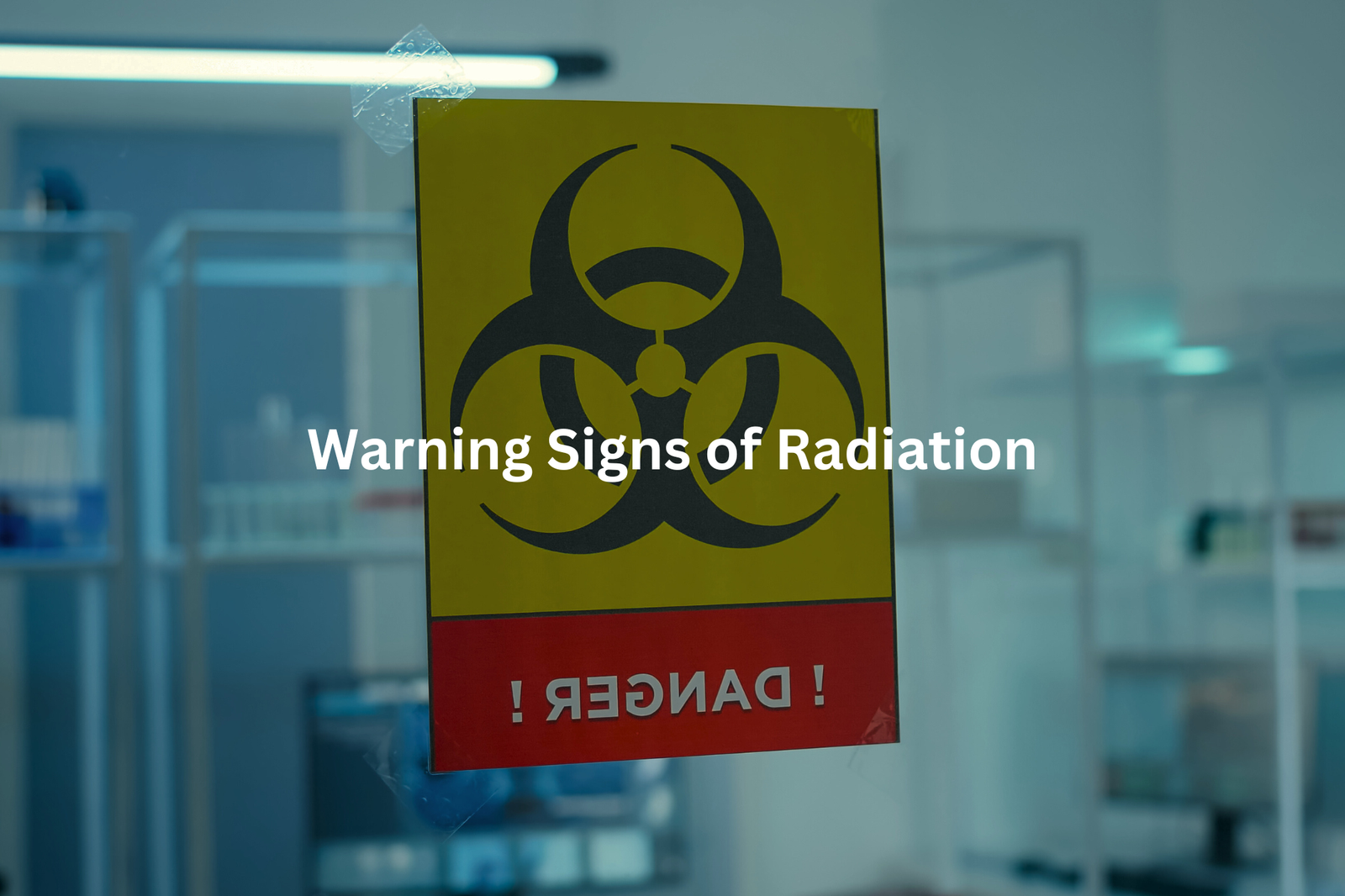
Radiation safety in hospitals requires careful attention to warning signs and safety measures(3). The black-and-yellow trefoil symbols mark radiation areas, serving as clear indicators for staff and patients.
Medical radiation exposure varies by procedure. A chest X-ray delivers about 0.1 millisieverts (mSv), similar to daily sun exposure. CT scans produce higher doses at 10 mSv, while radiation therapy for cancer treatment can reach 70,000 mSv over a treatment period.
Healthcare workers follow strict guidelines to manage radiation exposure:
- Using protective lead aprons
- Maintaining safe distances
- Limiting exposure time
- Following dosage protocols
The risks from medical radiation are quite low compared to the benefits. A patient getting multiple scans should discuss the necessity with their doctor. When encountering radiation warning signs in medical facilities, maintaining proper distance helps ensure safety. These precautions help medical staff deliver essential treatments while protecting everyone involved.
Health Concerns
Medical imaging machines use invisible radiation that travels through the body’s tissues. Different parts of the body react differently to this radiation.
The thyroid, a small gland in the neck, absorbs radiation easily (especially from iodine-based sources). Bone marrow, which makes blood cells, can get damaged by too much exposure. The reproductive organs need special protection during X-rays, and that’s why radiologists use lead shields.
A standard dental X-ray gives off 0.005 millisieverts (mSv) of radiation, while a chest CT scan produces about 7 mSv. Cancer treatment with radiation therapy might use up to 70,000 mSv in targeted areas.
Most medical scans are safe, but patients should:
- Keep records of their imaging history
- Ask about radiation levels for each scan
- Consider alternatives like ultrasound when possible
- Accept protective shields when offered
The benefits of medical imaging usually outweigh the risks when used properly.
FAQ
What is the SI unit for measuring radiation?
The SI unit for measuring radiation is the gray (Gy). This unit measures the amount of energy absorbed by living tissue when exposed to ionising radiation, such as gamma rays or X-rays. The gray is a measure of the absorbed dose, which is the amount of radiation energy deposited per unit mass of the exposed material.
How can I stay safe from high levels of radiation?
If you are exposed to high levels of radiation, the best thing to do is stay inside and avoid going outside. Close all windows and doors to prevent radioactive particles from entering your home. Use a survey meter to measure the radiation levels and avoid areas with high readings. Limit the time you spend in contaminated areas to reduce your total dose.
What are the potential health risks of radiation exposure?
Exposure to high levels of radiation can have serious health effects, including increased risk of cancer, radiation sickness, and cell damage. Factors like the dose received, type of radiation, and duration of exposure can all affect the degree of health risks. Long-term exposure to low levels of radiation may also have adverse effects, such as an increased risk of cancer over time.
How do I protect myself from the risks of radiation?
To protect yourself from radiation risks, it’s important to follow safety limits and guidelines set by public health authorities. Use a survey meter to monitor radiation levels in your environment. Limit your time in areas with high radiation. Wear protective gear like lead aprons if working with radioactive materials. Avoid unnecessary exposure to sources like medical devices, nuclear power plants, or microwaves.
What should I do if I’m exposed to high levels of radiation?
If you believe you have been exposed to high levels of radiation, the first step is to get to a safe location away from the source. Remove any contaminated clothing and wash your body thoroughly. Seek immediate medical attention, as high radiation exposure can cause acute effects like radiation sickness. Your doctor can assess the dose you received and provide appropriate treatment or monitoring.
Conclusion
Radiation exists all around us (both natural and artificial sources). Different types of radiation affect human health in various ways, from mild skin burns to more serious cell damage. Medical professionals use special equipment like lead aprons and radiation badges to track exposure levels.
Basic safety steps include keeping a safe distance (usually 2-3 meters) from radiation sources, limiting exposure time, and following posted warning signs. Regular safety training helps medical staff protect themselves and their patients from unnecessary radiation risks.
References
- https://www.ansto.gov.au/sites/default/files/2019-01/What%20is%20radiation%20brochure%202018%20final%20eVersion.pdf
- https://www.health.gov.au/sites/default/files/2024-08/draft-national-strategy-for-radiation-safety-and-implementation-plan.pdf
- https://www.health.qld.gov.au/__data/assets/pdf_file/0019/1104661/premises-ionising-radiation-sources.pdf

